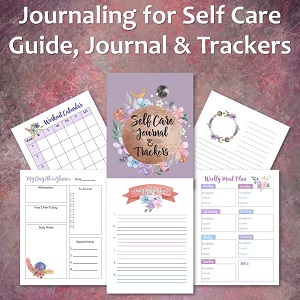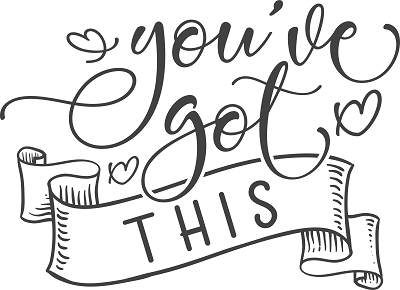 Self-acceptance is an acceptance of all of one’s characteristics and attributes, both positive and negative.
Self-acceptance is an acceptance of all of one’s characteristics and attributes, both positive and negative.
Self-acceptance is similar to self-esteem, which is a confidence in one’s own abilities. However, self-acceptance goes deeper, and is a more holistic understanding of one’s self as both capable and skilled, as well as flawed and fallible. Self-acceptance is recognition that you have worth, just as you are – regardless of past acts or future potential. Just being is enough.
Self-acceptance isn’t the same as complacency or self-satisfaction, though. Often, it’s only by first understanding and accepting one’s flaws that a person can begin to change. Self-acceptance doesn’t preclude a desire to learn, achieve, or grow, but at the same time it doesn’t require change or growth.
Self-acceptance is not a way station on the path to future achievement. To think of it that way is still to depend on a contingent sense of worth. With true self-acceptance, today, now, who you are, is all you need.
Self-acceptance can be developed in childhood by parents who affirm the intrinsic worth of a child, regardless of their behavior (good or bad). When this sort of affirmation is withheld in childhood, people grow up feeling that their self-worth is contingent on external markers: being smart enough, pretty enough, rich enough, having the right car, the right job, the biggest boat.
Or, they internalize the idea that they will never be good enough, a conclusion that can lead to self-destructive behavior.
Once people achieve a state of self-acceptance — a journey that can take a lifetime — they are free to truly be themselves, whoever that is.
The Benefits of Self-Acceptance
Working toward accepting yourself might be the greatest gift you ever give yourself. Self-acceptance can help you manage your moods, reduce symptoms of depression, and increase positive emotions. It can help you stop self-destructive behaviors and learn to be fulfilled. In short, self-acceptance can make you happy.
Link for more information – https://www.ncbi.nlm.nih.gov/pmc/articles/PMC3933359/
The benefits of self-acceptance include increased greater self-worth and self-esteem. People with more self-acceptance feel more freedom and autonomy. They are more likely to live for themselves and not worry about others’ approval.
Accepting yourself fully, as a complete person with strengths and weaknesses, helps to calm the voice of self-criticism. It also helps to tame the fear of failure. After all, if you accept yourself, it’s easier to accept that failure is simply a step on the path to achievement.
With less self-criticism and less fear of failure, it’s easier for self-accepting people to take risks. When mistakes do happen, self-accepting people are more likely to treat themselves with compassion and kindness.
For those people who don’t accept themselves, the journey toward self-acceptance can be long. It’s difficult to take a clear, unflinching look at one’s strengths and weaknesses, and learn to be at peace with them, rather that fighting with one quality or another.
However, just imagine the freedom and energy you would feel if you could quieten your negative voices, and didn’t fear failure or the consequences of taking risks.
The closer you get to self-acceptance, the more benefits accrue. It may be a long road, but the journey toward self-acceptance is the most important journey you will ever take.
The Steps to Self-Acceptance
In the first Star Wars trilogy, young Luke Skywalker transformed from an awkward young farmhand into the greatest Jedi by confronting his fears and acknowledging his own dark side. His journey, what Joseph Campbell called the Hero’s Journey, was really an exploration of his own self.
Without a willingness to confront his own weaknesses and failings, Luke could not emerge to bring balance to the force by helping his father begin the same journey.
Link for more information – https://www.youtube.com/watch?v=2F7Wwew8X4Y
Here is how to walk your own path toward self-acceptance.
1 – Start with Self-Awareness
You can’t accept what you don’t understand. A key element of learning to accept yourself is first to understand yourself. Becoming self-aware will help you identify your true motivations and desires. It will help you better read other people’s and will help you respond in thoughtful and appropriate ways.
For example, imagine that at work one of your direct reports reminds you of your sister, who you have a terrible relationship with. You might find that the employee seems to “push your buttons” when actually you are simply projecting your feelings about your sister on her.
By becoming more aware of your own reactions, you can set your knee-jerk response aside, and treat your employee appropriately, as herself.
Becoming self-aware is a challenge that can take a lifetime. Here are some steps that can help:
Work with a Professional
If you are serious about learning more about yourself, your history, your motivations and emotions, consider working with a counselor or therapist. A trained professional can help guide and support you in becoming more self-aware.
Quantify yourself
Do you love taking quizzes on where the sorting hat would place you at Hogwarts? Consider working through a series of questionnaires to help you think through various aspects of yourself.
While they might not be as fun as the quizzes on your favorite website, the Authentic Happiness Project at the University of Pennsylvania has a full battery of quizzes that help you understand your values, motivation, and level of happiness. The quizzes are free, but registration is required:
https://www.authentichappiness.sas.upenn.edu/testcenter
Understand Your Life Story
Everyone’s life story has two aspects. There are the objective facts, things that could be verified by a researcher. Then, there’s the interpretation that you place on those facts. Psychologists call this “narrative identity”. How you understand your narrative shapes your current actions and your future goals.
Research shows that people who tell life stories that feature personal agency and exploration, and who find redemptive meaning in suffering and hardship, tend to be healthier and happier. Write down some stories from your life.
Think about how you frame your stories. Is there another way to look at what happened? Can you focus on the good, instead of the bad? Explore different ways of telling your own story and see how your feelings change when you shift the narrative.
Link for more information – https://journals.sagepub.com/doi/abs/10.1177/0963721413475622
Seek Feedback
It can be hard to see ourselves fully, for good and for ill. If you have a trusted friend, family member, or colleague, ask for feedback. What do they see as your strengths and weaknesses? Try not to react to their feedback; rather, simply sit with it. How does their impression of you differ from your own? Were you surprised by anything? Flattered? Ashamed? Your reaction to the feedback can tell you a lot.
2 – Getting Rid of Negativity
A key element of self-acceptance is getting rid of negativity. To fully accept yourself, you need to become aware of and acknowledge your flaws, weaknesses, mistakes, and failures — and then you must accept them. They are part of you, part of the messy, complicated, whole human being that you are.
Negative Thought Patterns
Accepting your flaws doesn’t mean you have to like them, but you do have to be ok with the reality of their existence. This requires getting rid of negativity toward yourself. This includes:
- Comparing yourself to others – A little competition can be healthy, but obsessively comparing yourself to others isn’t healthy. There will always be someone smarter, stronger, prettier, richer, or whatever quality you are concerned with. At the same time, you’ll always find someone to look down on if you go looking — but do you really want to?
- Criticizing yourself – Imagine this: Your child’s teacher hands them back an essay marked with an “F” and says, “You are so stupid, you don’t deserve to be in this class!” What would you do? If your answer is, report the teacher’s behavior immediately and demand they be reprimanded, you are correct. Now, if you wouldn’t let your child’s teacher speak that way to them, why would you let the voice in your head say the same things to you? Fire that critical voice.
- Allowing your negative qualities to overshadow your strengths – While true self-acceptance requires knowing one’s own strengths and weaknesses, too often we focus on the weaknesses and ignore the strengths. Allow yourself to acknowledge and celebrate your achievements.
- Focusing on the past, rather than present and future – All too often, we spend our time focused on the past. This blinds us to the realities of today and the possibilities of tomorrow. Even if your current situation is not what you want it to be, the mental energy you spend reliving the mistakes of the past could be put to better use building the future you want. Learn from the past but don’t live in it.
How to Shut Down Those Negative Thought Patterns
The list of negative thought patterns can go on and on. The key is, how do you shut down those negative patterns? Here are some tips:
- Set an intention – Consciously choosing to focus on the positive, rather than the negative, can help you reframe your thinking. Many people find that a physical object such as a crystal, rock, or small piece of jewelry serves as a useful reminder of their intentions. Hold the object, think of what you want to achieve, and then keep the object close so that seeing it will remind you of your intention.
- Critique your thoughts – When your mind gets stuck in a negative grove, take a moment to analyze your thought patterns. Ask yourself three questions: 1. Is this thought true? 2. Is it important? 3. Is this thought helpful? You’ll quickly see that most of your negative thoughts are none of these.
- Come up with one positive for every negative – Remember that TV trope where a character argues with a devil sitting on one shoulder and an angel sitting on the other? If you suffer from negative self-talk, that’s the little devil speaking. Counteract that voice with a positive one. If you are angry at yourself for failing a test, remember an assignment you did well on. If you are anxious about presenting at work, remember how your idea will benefit your company.
- Meditate – Mindfulness meditation can relieve stress, calm anxiety, help protect against a relapse of depression, help manage pain, and even help build grey matter in your brain. Mindfulness promotes greater self-awareness, and helps you develop healthier emotional responses to negative events.
More on Mindfulness Meditation
To begin mindfulness meditation, simply sit quietly and focus on your breath. As you sit, thoughts will bubble up. You’ll notice that your leg itches to remember that bill you forgot to pay. That’s normal. The goal is not, as many people think, to turn off the flow of thoughts.
The goal is to practice placing your attention where you choose it to be, and letting everything else go, like flotsam floating past on a river.
Thoughts will come and go but keep your attention on your breath. Over time, you’ll get better and better at calming your mind, and choosing where to focus.
Links for more information:
https://psychcentral.com/blog/10-surprising-health-benefits-of-mindfulness-meditation/
https://www.ncbi.nlm.nih.gov/pubmed/22148989
3 – Encouraging Positive Self-Talk
Once you have identified negative thought patterns and are working to combat them, the next step is to actively embrace positive self-talk.
Positive self-talk and positive thinking are not ways to deny reality or a way of pretending everything is ok when it’s not. In fact, studies show that optimists are more effective at dealing with problems than pessimists. Optimists tend to face problems head on, seeking to reduce, manage or eliminate the source of stress. When that’s not possible, optimists tend to focus on managing their emotions. They face negative situations with acceptance, humor and a reframing of the situation.
Link for more information – https://www.ncbi.nlm.nih.gov/pmc/articles/PMC2894461/
Psychologist Barbara L. Fredrickson has proposed that the benefits of positive thinking and emotion can ripple out through our lives, like waves from a pebble thrown into a pond. She has named this the “broaden-and-build theory of positive emotion”.
This theory is built on her research showing that experiencing positive emotions such as joy, interest, contentment and love can change first our thinking and then our behavior in significant ways that lead to positive results long down the road.
For example, a happy child who is encouraged to run, play, and climb trees is building physical skills that may translate into an athletic scholarship to an Ivy League school long down the road.
Link for more information – https://www.ncbi.nlm.nih.gov/pmc/articles/PMC1693418/pdf/15347528.pdf
So, how do you move from combating negative thought patterns to actively encouraging positivity and happiness? Setting yourself up for an “upward spiral” can improve your life, and actually rewire your brain to help guard against negative emotional states.
Link for more information – https://www.ncbi.nlm.nih.gov/pmc/articles/PMC2908186/
Here’s how to do it:
Practice Loving-kindness Meditation
In a recent study, people who learned loving-kindness meditation reported more positive interactions in their daily lives, which helped them build more personal resources (increased social support, mindfulness, less physical illness). These resources helped increase life satisfaction and decrease depression.
Link for more information – https://www.ncbi.nlm.nih.gov/pmc/articles/PMC3156028/
The goal of loving kindness meditation is to focus positive, kind, loving energy toward yourself and others. Here’s an explanation of how to do it from Verywell Mind:
https://www.verywellmind.com/how-to-practice-loving-kindness-meditation-3144786
Write Positively
In a study, students who wrote about positive experiences each day for three days showed improved mood, and actually boosted their health. Over the next three months, they had fewer visits to the doctor than the control group.
Link for more information – https://www.sciencedirect.com/science/article/abs/pii/S0092656603000588
Every day, or at least a few times a week, take a few minutes to write about something positive in your life. Need ideas? Reflect on things you are grateful for, things that make you smile, or your happiest memories.
Play
When was the last time you did something silly, unstructured, and creative? Whether it’s a pick-up basketball game, grabbing your paint brushes and making a glorious mess of a canvas, or simply losing yourself in the woods for a while, schedule regular time to do something that gives you joy.
You may feel like you don’t have time, but just like your body wilts if you don’t eat, your spirit wilts too if it isn’t fed regularly.
Whatever it is that gives you joy, make time for it in your calendar, and those positive emotions will offer a tremendous return on investment.
Flip Your Timelines
Too often, we put off happiness into the future: “I’ll be happy when I do X.” However, research shows that accomplishment tends to follow from happiness, not the other way around. The next time you think, “I’ll be happy when…”, stop yourself.
Find something that makes you happy now, and come back to your task with renewed energy, creativity, and drive.
4 – Forgiving Yourself
One of the most difficult parts of the journey toward self-acceptance is coming to terms with one’s flaws, mistakes, and regrets. Yet, coming to terms with things you’ve done and learning to forgive and let go of the weight of past mistakes, is a crucial step in reaching self-acceptance.
If you need to forgive yourself for something, here are some steps to try. As always, if you are experiencing extreme distress, reach out to a professional who can help guide you through this process.
Recognize the Lesson Your Guilt is Trying to Teach
The negative sensations we feel when we make a mistake or do something wrong are there for a reason. They are trying to teach you not to do the same thing again.
In fact, scientists can detect the physiological response that guilt causes in children using infrared imaging. Internalizing — literally — the sensation of guilt is an important step in the development of a moral compass.
Link for more information – https://www.ncbi.nlm.nih.gov/pmc/articles/PMC3834185/
If you haven’t learned what your guilt is trying to teach you, it won’t let go. Accept and acknowledge what you did. Apologize and make amends where you can. Consider how you can do better the next time.
It takes courage to own your actions (and it may take time) but doing so lessens the feelings of guilt and shame we may be carrying around.
Extend Compassion Toward Yourself
If you have accepted responsibility for your actions and still can’t forgive yourself, it’s time to allow yourself some compassion. Imagine that someone you love made the same mistake and was continuing to suffer for it.
Imagine what you might say to comfort them. How would you encourage them to move forward? Now, extend that same kindness and compassion toward yourself. Treat yourself as you would a loved one.
Engage with Your Spirituality
Most religions have formal rituals of repentance and forgiveness. If you are religious, speaking with a leader of your faith can help you through this journey. If you aren’t religious, secular rituals can serve a similar purpose.
For example, at the Burning Man festival, a temple is built, and burned, every year. People leave messages at the temple, to be burnt in the fire.
In Santa Fe, New Mexico, the annual burning of Zozobra, the “Gloomy Man,” allows the citizens to release their gloom by leaving notes in the “Gloom Box,” which is burnt along with Zozobra. You can construct a ritual of your own to help you confront, and release yourself from, your past actions.
Practice Acceptance
Things that lie in your past do not have to define your future. By accepting your past, you can release its emotional hold, and move into the future with new energy. If acceptance is coming slowly, practice imagining what true acceptance might feel like.
How would it feel to be at peace with the past? To let go of struggling with your negative emotions? Imagining that state can help manifest it. The more you practice acceptance, the more it will be your reality.
Accepting Shortcomings and Setbacks
When you accept yourself, you accept your shortcomings, and accept that setbacks happen. However, the road to self-acceptance is a long one, and setbacks can knock you off the path.
When you are confronted with a setback, or make a mistake, or uncover a deficiency, self-acceptance gives you the tools to cope. All the steps to achieving self-acceptance laid out in this report become more important when bad things happen.
When you are under stress, set aside time to practice gratitude. Take a few minutes for a daily meditation. Rewrite your inner monologue in positive terms. All these steps will help you cope more effectively through your setback, and help you continue down the road toward self-acceptance.




